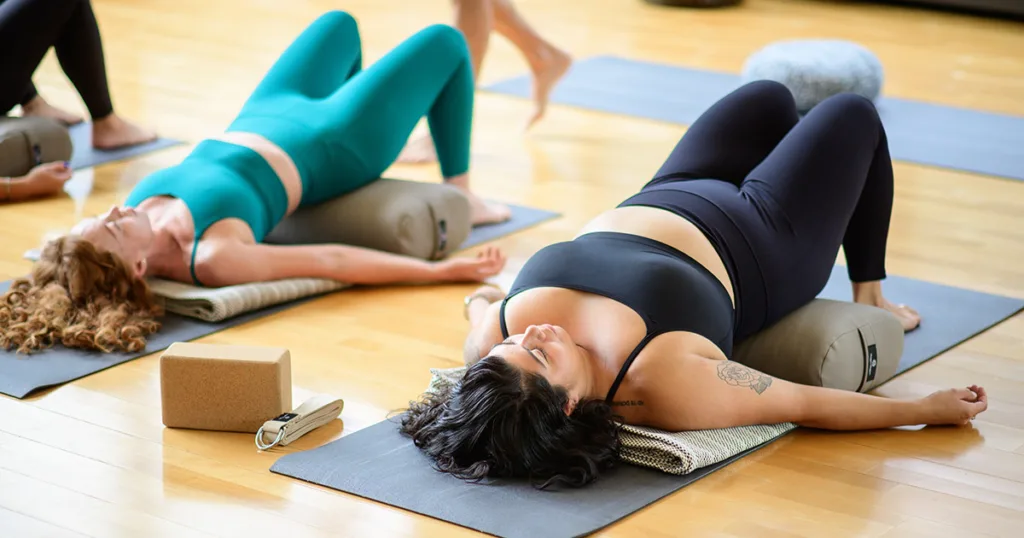
Sometimes it can be a struggle to step onto your yoga mat. This is especially true if you practice in the evening. After a challenging day, it’s sometimes hard to justify practicing a bunch of sweaty vinyasas. But the good news is, yoga doesn’t have to add to your challenges. Resting in a single Restorative Yoga pose can be a powerful way to balance those jittery and/or flaccid energies. Salamba Setu Bandha Sarvangasana (Supported Bridge Pose) is the perfect pose to calm your nervous system and renew the quiet energy that yoga practice is meant to generate.
Benefits and Contraindications of Supported Bridge Pose
Supported Bridge Pose combines the benefits of backbending with those of Restorative Yoga.
In general, backbends reverse the normal order of things. We spend most of our days bending forward over devices, countertops, steering wheels, etc. This can cause our spine to develop a forward-bending habit that can eventually become frozen if we don’t remember to do the opposite from time to time. Practicing Supported Bridge Pose expands the chest and stretches the hip flexors, which tend to tighten as a result of prolonged sitting.
While active backbends are generally stimulating, Supported Bridge is actually relaxing. When your head is below your heart and your neck is flexed, it triggers a process called the ”baroreflex.” In a nutshell, the baroreflex suppresses the sympathetic (fight-or-flight) side of the autonomic nervous system and shifts you to the parasympathetic (rest-and-digest) side.
Because you can stay longer in a supported version of the pose, the body has a chance to ease into the stretch. This adds to the relaxing effect of the pose.
Contraindications to Supported Bridge Pose include disc problems in your neck and back or knee problems. Because it is a slight inversion, avoid Supported Bridge Pose when you’re on your menstrual period or if you have uncontrolled high blood pressure, glaucoma or detached retina.
How to Practice Bridge with a Bolster
- Gather your props: a Yoga Mat and a Standard Yoga Bolster.
- Lie on your mat with your Bolster close by. Place your arms close in to your sides.
- Bend your elbows and press your upper arms into your mat to help you arch your ribcage up.
- Straighten your arms out alongside your body, and then press your feet down into the floor. As you plant your feet, stretch your knees out away from your pelvis to lift your hips. For a more detailed description of this instruction, read this blog.
- Place your bolster crosswise under your pelvis—not your low back. It should be positioned under the sacroiliac (SI) joint.
- If your knees are uncomfortable, feel free to place a block between your knees and squeeze your knees into the block. For this, you’d want to use the narrowest dimension.
- Relax your neck, throat and jaw, as well as your facial muscles. Breathe deeply. You can stay here for as little as a minute or two or for longer—up to 15 to 20 minutes—if it’s comfortable.
- To leave the pose, lift your hips off the bolster. Slide the bolster out from under your pelvis and set it aside. Extend your arms out overhead and slowly roll your spine down onto the floor.
- Stay here for several breaths, allowing your back body to soften into your mat.
